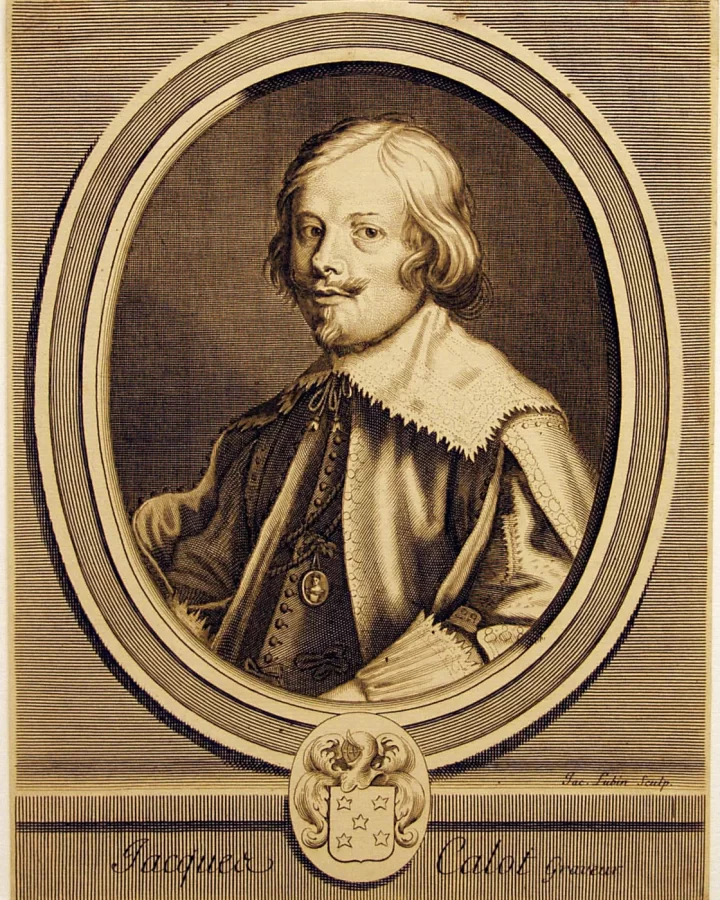Jacques Callot (French, c. 1592–1635)
Callot made more than 1,400 etchings that chronicled the Baroque period featuring soldiers, clowns, beggars, court life, and religious and military images. He apprenticed in engraving in Rome and worked for the Medici court. His prints were well-known; many were collected by Francisco Goya and Rembrandt. Known for his superior technique, Callot developed the échoppe, an etching-needle with a slanting oval section at the end, as well as an improved recipe for the etching ground that reduced “foul biting,” or unintended splotches, and allowed for a deeper etch.


